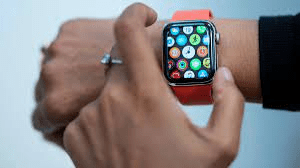Market for Wearable Technology to Reach USD156 billion in 2024
The wearable technology industry is expected to increase at a high pace, according to a new analysis. The market is anticipated to develop at a compound annual growth rate (CAGR) of 24.6%, from a value of USD 59 billion in 2020 to USD 156 billion by 2024.
The medical device business is one area of the wearable market that is expanding significantly. With ageing populations, growing healthcare expenditures, and the burden of chronic illnesses, wearable technology has gained attention as a possible solution. Notably, attention has been drawn to wearable medical devices created for renal illness and dialysis.
The ease and effectiveness of peritoneal dialysis (PD) are being improved by wearable medical devices, according to a thorough analysis done by GlobalData, a famous data and analytics business. PD uses the abdominal lining to filter blood within the body as a therapy for renal failure.
These wearable technologies provide patients more mobility, comfort, and alternatives for continuous treatment, enabling them to take control of their dialysis schedule. Patients show higher treatment adherence as a consequence, get better results, and feel more independent and normal in their everyday lives.
A wearable peritoneal dialysis equipment might be a great option for many patients, according to Alexandra Murdoch, a medical analyst at GlobalData, who highlighted the rising demand for wearable technology. The convenience it provides to patients may be credited with the wearable device market’s quick rise. Murdoch also highlighted how wearable technology often works with remote patient monitoring systems, allowing people to get treatment without physically travelling to clinics or hospitals.
The paper also highlighted a significant development between Singapore-based AWAK Technologies and Singapore General Hospital (SGH). A pre-pivotal clinical research on a wearable peritoneal dialysis device has been started by the two organisations.
Murdoch expressed hope that kidney disease patients’ lives may be improved, saying that “Wearable devices that allow kidney disease patients to live a normal life hold immense promise.” Patients’ independence outside of the hospital will increase thanks to their convenience, which will eventually improve their quality of life.







